Best Laravel Books to Buy in December 2025
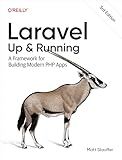
Laravel: Up & Running: A Framework for Building Modern PHP Apps


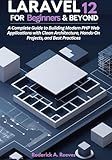
Laravel 12 for Beginners & Beyond: A Complete Guide to Building Modern PHP Web Applications with Clean Architecture, Hands-On Projects, and Best Practices



Laravel: Up & Running: A Framework for Building Modern PHP Apps



Architecture of complex web applications. Second Edition.: With examples in Laravel(PHP)


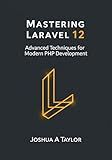
Mastering Laravel 12 : Advanced Techniques for Modern PHP Development



Ultimate Laravel for Modern Web Development: Build Robust and Interactive Enterprise-Grade Web Apps using Laravel's MVC, Authentication, APIs, and ... (Advanced Web Frameworks — Multi-Tech Path)


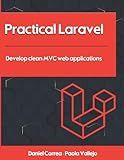
Practical Laravel: Develop clean MVC web applications



Laravel: Up and Running: A Framework for Building Modern PHP Apps


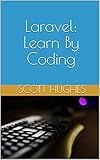
Laravel: Learn By Coding


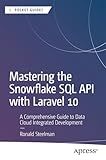
Mastering the Snowflake SQL API with Laravel 10: A Comprehensive Guide to Data Cloud Integrated Development (Apress Pocket Guides)


In Laravel, you can access a method without creating an object by using the static keyword in the method declaration. By defining a method as static, you can call it directly on the class without having to instantiate an object first. This can be useful for utility methods or functions that do not require an instance of the class. Additionally, you can also use the double colon (::) syntax to call static methods directly on a class without creating an object. This allows for a more streamlined and efficient way of accessing methods in Laravel without the need to instantiate objects.
How to access a method in Laravel without instantiating a class by utilizing Laravel's container instances?
You can access a method in Laravel without instantiating a class by using Laravel's container instances. Here's how you can do it:
- First, make sure the class containing the method you want to access is registered in Laravel's service container. You can do this by binding the class to the container in the AppServiceProvider or any other service provider.
- Once the class is registered, you can use the app() helper function or the Laravel's app container instance to resolve an instance of the class and then call the method on that instance.
Here's an example:
// Suppose you have a class named MyService with a method named myMethod class MyService { public function myMethod() { return "Hello, Laravel!"; } }
// Register the class in the service container in the AppServiceProvider boot method $this->app->bind('MyService', function($app) { return new MyService(); });
// Now you can access the method without instantiating the class $myService = app('MyService'); $result = $myService->myMethod(); dd($result); // Output: "Hello, Laravel!"
By following these steps, you can access a method in Laravel without instantiating the class directly, using Laravel's container instances.
What is the recommended way to access a method without creating an object in Laravel?
You can access a method in Laravel without creating an object by using static methods or binding the method to the container.
For static methods, you can define a method as static in your class and then call the method directly by using the class name followed by the :: operator.
For example:
class MyClass { public static function myMethod() { return 'Hello'; } }
// Call the static method $result = MyClass::myMethod();
Alternatively, you can bind the method to the container in Laravel's service provider or in your application's bootstrap file.
For example, in a service provider:
$this->app->singleton('myClass', function () { return new MyClass(); });
// Call the method without creating an object $result = app('myClass')->myMethod();
Using either of these methods allows you to access a method in Laravel without creating an object.
What is the advantage of using Laravel's container instances to access methods without object creation?
One advantage of using Laravel's container instances to access methods without object creation is that it allows for better decoupling of code and easier testability. By using the container to resolve dependencies and access methods, you can more easily swap out implementations or mock objects during testing, making your code more modular and flexible. Additionally, using the container to access methods can help you adhere to the principles of dependency injection, leading to cleaner, more maintainable code.
What is the difference between accessing a method with facades and creating an object in Laravel?
In Laravel, accessing a method with facades and creating an object are both ways to interact with classes and objects in the application.
- Accessing a method with facades: Facades in Laravel provide a static interface to classes that are available in the application's service container. Facades allow you to conveniently access methods on objects without having to manually instantiate the object. When you use a facade to access a method, Laravel will resolve the underlying object from the service container and call the method on that object. This provides a cleaner and more expressive way to interact with classes in Laravel.
Example:
use Illuminate\Support\Facades\DB;
$users = DB::table('users')->get();
- Creating an object: Creating an object involves manually instantiating a class using the new keyword. When you create an object, you can directly call methods on that object and pass any necessary parameters to those methods. This approach gives you more control over the object's lifecycle and allows you to work directly with instances of classes.
Example:
$user = new User(); $user->name = 'John Doe'; $user->save();
In summary, accessing a method with facades is a more convenient and expressive way to interact with classes in Laravel, while creating an object gives you more control over the object's lifecycle and allows you to work directly with instances of classes. Both approaches have their own use cases and advantages, so the choice between them will depend on the specific requirements of your application.
How to access a method in Laravel without creating an object by using method injection in controllers?
In Laravel, you can access a method in a controller without creating an object by using method injection. Method injection allows you to type-hint a class or interface in the controller method signature and Laravel automatically resolves and instantiates the class for you.
Here is an example of how to access a method in Laravel without creating an object using method injection:
use App\Services\SomeService;
class SomeController extends Controller { protected $someService;
public function \_\_construct(SomeService $someService)
{
$this->someService = $someService;
}
public function someMethod()
{
// You can now access the method from the injected SomeService instance
$result = $this->someService->someMethod();
return $result;
}
}
In the example above, the SomeService class is type-hinted in the controller's constructor, and Laravel automatically resolves and instantiates an instance of the SomeService class when the controller is instantiated. You can then access the methods of the SomeService class by calling them on the injected $someService property.
Using method injection in controllers can make your code cleaner and more flexible, as it allows you to easily swap out implementations of a service without having to modify the controller.
